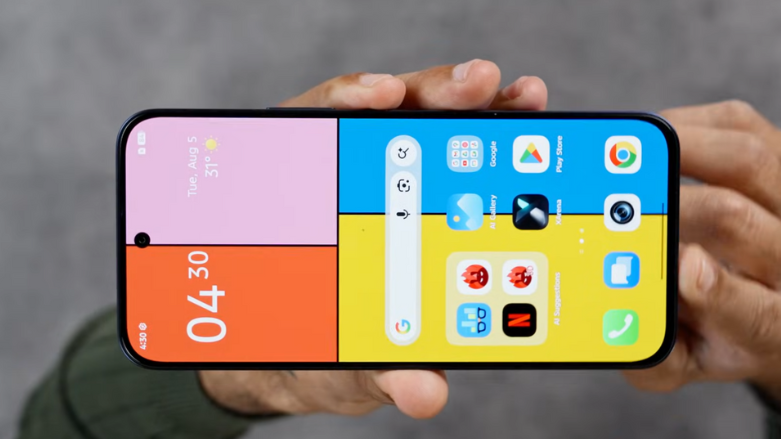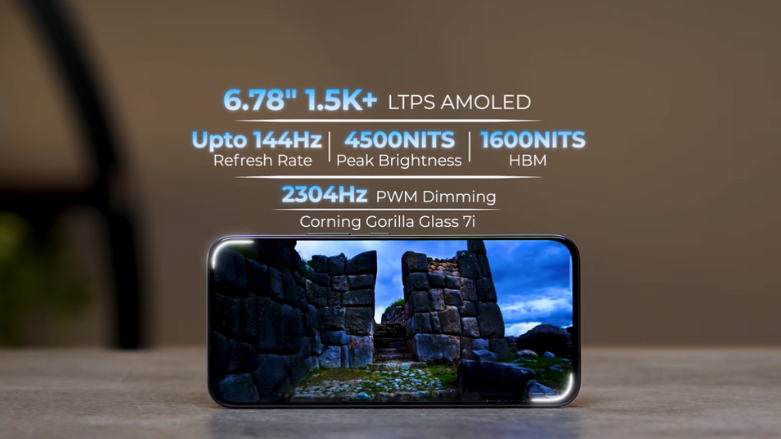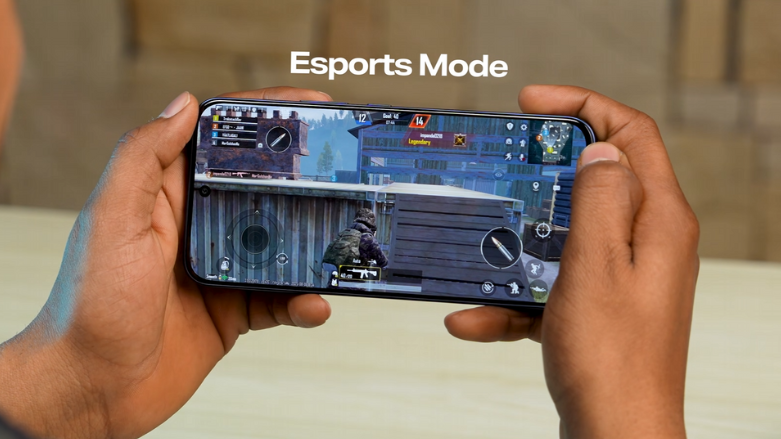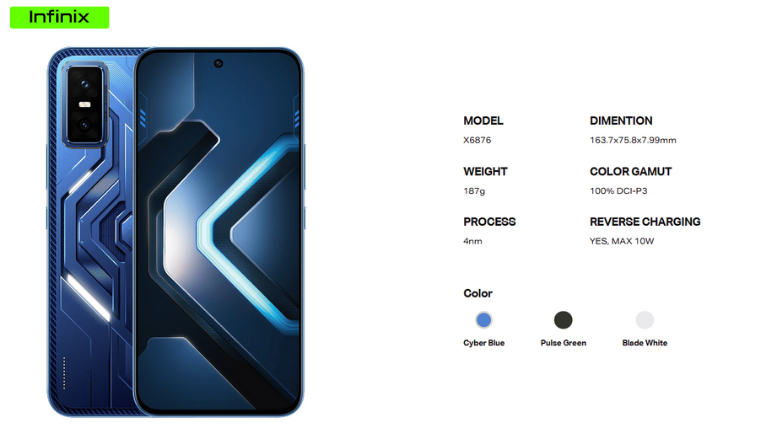Infinix GT 30 5G Review
The Infinix GT series has always been pitched at mobile gamers who want strong performance without paying flagship prices. The GT 30 5G follows that philosophy closely. In this review I’ll walk you through the design, display, performance, battery, charging, cameras, software, connectivity and most importantly my real-world gaming experience. I used the phone for daily tasks and played demanding titles to see where it shines and where it compromises. By the end you should be able to decide if this phone fits your needs.
Infinix GT 30 5G First impressions design, size and feel

At 163.7 x 75.8 x 7.99 mm and 187 grams, the GT 30 5G is well balanced for long gaming sessions. The phone doesn’t feel bulky, and its weight distribution makes it comfortable to hold for extended periods. The color options Cyber Blue, Pulse Green, Blade White, and Shadow Ash give it a slightly aggressive, gamer-centric look without being over-the-top. The matte finish (on the Pulse Green unit I tested) resists fingerprints well and offers a secure grip.
Build materials are practical rather than ultra-premium. The cover glass is Corning Gorilla Glass 7i, which provides solid protection and peace of mind during everyday use. The phone’s overall fit and finish feel consistent with what you’d expect from a performance-oriented mid-range device.
Infinix GT 30 5G Display: a true gaming highlight

The GT 30 5G+ packs a 6.78-inch LTPS AMOLED panel with a 1.5K resolution (1224 x 2720) and a 93.7% screen-to-body ratio. Colors look vivid and accurate thanks to 100% DCI-P3 coverage. What matters most for gaming is smoothness and responsiveness this phone scales from 60Hz up to 144Hz, and it supports up to 240Hz touch sampling rate (instant touch sampling 2160Hz listed), which translates to noticeably faster touch input recognition in competitive games.

Brightness figures are impressive on paper 700 nits typical, 1600 nits HBM, and 4500 nits peak and in practice the panel remains readable in bright daylight. PWM dimming and TÜV Low Blue Light certification help reduce eye strain during long sessions. Dual speakers and Hi-Res audio support (including Hi-Res Audio Wireless and DTS) complete the multimedia package, making the phone enjoyable for both gaming and content consumption.
Infinix GT 30 5G Performance chipset, memory and real-world speed
Under the hood sits the MediaTek Dimensity 7400 built on a 4nm process. The CPU configuration is an octa-core mix (4x Cortex-A78 up to 2.6 GHz and 4x Cortex-A55 up to 2.0 GHz) paired with an Arm Mali-G615 MC2 GPU. The combination of UFS 2.2 storage and LPDDR5X RAM helps the system feel snappy, especially in day-to-day use and multitasking.
Available memory options include 128GB + 8GB RAM (plus 8GB extended RAM) and 256GB + 8GB RAM (plus 8GB extended RAM). In my usage the Dimensity 7400 handled mid-to-high settings in modern titles without stuttering. It’s not a Snapdragon 8‑series killer, but for its price bracket it offers a very respectable balance between power draw and sustained performance.
Thermal behavior is good but not miraculous: extended marathon sessions with maximum graphics will warm the phone and, on occasion, trigger thermal throttling that slightly reduces frame consistency. That said, the throttling was mild and didn’t result in catastrophic FPS drops more of a small dip where the experience remained playable.
My gaming experience: what I actually felt while playing

I primarily tested the GT 30 5G+ with popular competitive shooters and graphically demanding titles. Right away, the high refresh rate and very responsive touch sampling made aiming and small movement corrections feel smoother than on 60Hz phones. Fast-paced encounters where milliseconds matter did feel better with the panel set to 120Hz or 144Hz.
Dual stereo speakers and the X‑axis linear motor made the experience much more immersive. Sound cues were clear and directional enough to be useful in competitive matches, and the haptics helped with tactile feedback during intense moments.
Battery-wise, the 5500 mAh cell is a blessing. A 90–120 minute high-graphics session consumed a predictable chunk of battery but left plenty for other tasks during the day. In my tests, I managed full gaming sessions without worrying about an immediate recharge; the phone comfortably lasted a day under mixed heavy usage.
Charging is reasonably fast at 45W (not the absolute fastest on the market, but well-balanced for a large 5500 mAh pack). Real-world topping up felt convenient: a short break gives you a meaningful boost, and the phone supports reverse charging up to 10W handy for emergency topping up of accessories.
Battery and charging long life with sensible charging speeds
The 5500 mAh battery provides reassuring longevity. For a user who plays games for a couple of hours, streams some media, and uses social apps, the phone can easily last a full day and usually more. With the 45W charging support, you can refresh the battery quickly it’s not flagship-class ultra-fast charging but it’s practical and kinder to battery longevity.
Reverse charging at up to 10W is convenient for earbuds or other small accessories. Of course, reverse charging will not be a substitute for a proper power bank, but it’s a useful safety net.
Camera and multimedia good for everyday use not the main focus
Infinix hasn’t prioritized a top-tier camera setup on the GT 30. Instead, the focus is gaming and multimedia. The camera system is competent for daily photos: daylight shots look fine, colors are punchy, and details are acceptable for social sharing. Low-light photography is average capable, but not class-leading. If photography is your top priority, you’ll find better alternatives in the same price range, but if gaming and battery life matter more, the GT 30’s camera will be just fine.
Multimedia playback benefits from Widevine L1 DRM support, so premium streaming at higher resolutions is available on supported apps. Dual speakers and Hi-Res audio features also help if you consume a lot of media on your phone.
Samsung Galaxy S25 FE Full Specifications
Connectivity software and sensors
The GT 30 5G+ covers the essentials: dual nano-SIM slots, 5G support (plus 4G/3G/2G compatibility), Wi-Fi 6, Bluetooth 5.4, GPS, and USB Type‑C. OTG and FM radio are included as well. The phone runs XOS 15 on top of Android 15, which brings additional gaming-centric features and customizations. Some users may find XOS heavier than a stock Android skin, but it’s feature-rich and includes useful gaming tools.
Sensors include a G‑sensor, e‑compass, gyroscope (important for many shooter and driving games), light sensor, proximity sensor, and in-display fingerprint sensor. There’s also an IR blaster for controlling home electronics a small but useful convenience. The device is rated IP64 for splash and dust resistance, so it can handle minor splashes and dusty environments but should never be submerged.
Build, durability and daily use
Gorilla Glass 7i on the display gives extra confidence against scratches and drops. The phone’s ergonomics make long gaming sessions more comfortable than many heavier alternatives. The X‑axis linear motor provides nice haptic feedback, and the dual speakers enhance immersion while gaming or watching videos.
If you’re a hardcore, competitive esports player who demands absolute thermal stability, you might notice the GT 30 warm during marathon sessions. For most users the thermal profile is acceptable; just be aware that very extended maximum-settings play will cause some thermal throttling.
Price and value how the numbers stack up
Retail listings indicate a starting price around ₹19,499 for the 128GB variant and ₹20,999 for the 256GB variant. For that price, the GT 30 5G+ offers strong value: a large high-resolution AMOLED display with up-to-144Hz refresh rate, a capable Dimensity 7400 chipset, LPDDR5X + UFS2.2 storage, and a big 5500 mAh battery with 45W charging. In the mid-range gaming segment, these features make the GT 30 a compelling buy for those who prioritize display, battery life, and gaming responsiveness over ultra-premium camera hardware.
Downsides and things to consider
The most notable compromises are thermal limits and camera performance when compared to higher-priced flagships. The Dimensity 7400 is a great chipset for its class, but it won’t match the absolute peak performance of flagship Snapdragon 8‑series chips. XOS may feel heavy if you prefer a cleaner stock Android experience. Finally, while the phone is IP64-rated, it’s not designed for water immersion.
Final verdict: an excellent mid-range gaming choice with sensible trade-offs
If you’re looking for a gaming-centric smartphone that won’t break the bank, the Infinix GT 30 5G+ is a highly sensible option. It nails what matters for gamers: a high-quality AMOLED screen, high refresh rates, responsive touch, long battery life, and a balanced performance package. My real-world experience confirmed that competitive and casual gaming both feel enjoyable and consistent.
That said, if you prioritize best-in-class cameras or the absolute peak in thermal headroom for marathon esports sessions, you may want to consider spending more for a flagship-level device. For most gamers who want the best bang-for-buck in 2025, the GT 30 5G+ hits its marks and is easy to recommend.
Short summary (quick specs and verdict) https://infinixmobiles.in/pages/gt-30–5g
The Infinix GT 30 5G+ features a 6.78-inch 1.5K AMOLED display with up to 144Hz refresh rate, MediaTek Dimensity 7400 (4nm), 8GB RAM (plus 8GB extended virtual RAM), 128/256GB UFS2.2 storage, a 5500 mAh battery and 45W charging. It offers gaming-focused features like high touch sampling rates, dual stereo speakers, X‑axis haptics, and a practical thermal profile. Priced around ₹19,499–₹20,999 depending on configuration, it represents a strong mid-range gaming value with sensible compromises.
| Feature | Specification |
|---|---|
| Model | X6876 / X687 |
| Dimensions | 163.7 x 75.8 x 7.99 mm |
| Weight | 187 g |
| Colors | Cyber Blue, Pulse Green, Blade White, Shadow Ash |
| Display | 6.78″ LTPS AMOLED, 1.5K (1224 × 2720), 93.7% screen-to-body |
| Refresh rate | 60 / 90 / 120 / 144 Hz |
| Touch sampling | Up to 240 Hz (Instant touch sampling 2160 Hz) |
| Brightness | 700 nits (typ), 1600 nits (HBM), 4500 nits (peak) |
| Color gamut & certification | 100% DCI-P3, TÜV Low Blue Light |
| Cover glass | Corning® Gorilla® Glass 7i |
| Chipset / Process | MediaTek Dimensity 7400 (4 nm) |
| CPU | Octa-core (4× Cortex-A78 up to 2.6 GHz + 4× Cortex-A55 up to 2.0 GHz) |
| GPU | Arm Mali-G615 MC2 |
| RAM / Storage | 8 GB RAM + 8 GB Extended RAM (virtual); 128 GB / 256 GB UFS2.2 |
| RAM / Storage type | LPDDR5X RAM, UFS 2.2 storage |
| Battery | 5500 mAh (typ) |
| Fast charging | Max 45W (10.0V/4.5A or 11.0V/4.1A) |
| Reverse charging | Yes — up to 10W |
| Speakers & audio | Dual speakers, Hi-Res, Hi-Res Wireless, DTS |
| Video / DRM | Widevine L1 |
| SIM / Network | Dual Nano SIM, 5G / 4G / 3G / 2G (multiple bands) |
| Wi-Fi / Bluetooth | Wi-Fi 802.11(a/b/g/n/ac/ax) (Wi-Fi 6), Bluetooth 5.4 |
| Ports / Extras | USB Type‑C, OTG, FM radio, IR blaster, Earphone support (Type‑C / 3.5mm depending on region) |
| Sensors | In-display fingerprint, G‑sensor, E‑compass, Gyroscope, Proximity, Light sensor |
| Haptics / Motor | X‑axis linear motor |
| Water / dust resistance | IP64 (splash & dust resistant) |
| Operating system | XOS 15 (based on Android 15) |
| Warranty & service | 1 Year warranty, 1300+ service centres (as stated) |
| Approx. Price (India) | ₹19,499 (128 GB) / ₹20,999 (256 GB) |
| Key selling points | 144Hz AMOLED, 100% DCI-P3, Dimensity 7400 (4nm), 5500 mAh + 45W charging, gaming-centric features (high touch sampling, X‑axis motor, dual speakers) |

